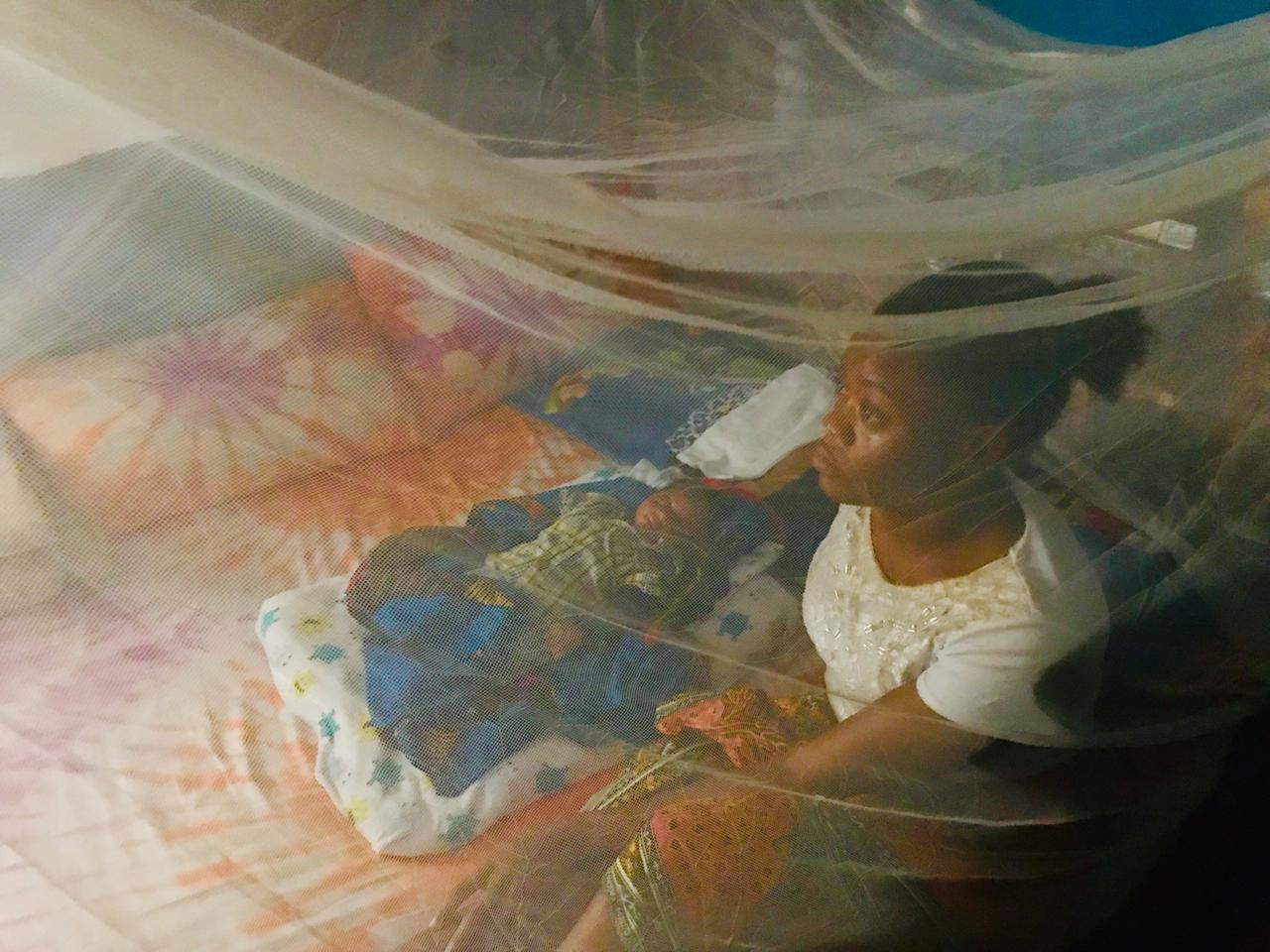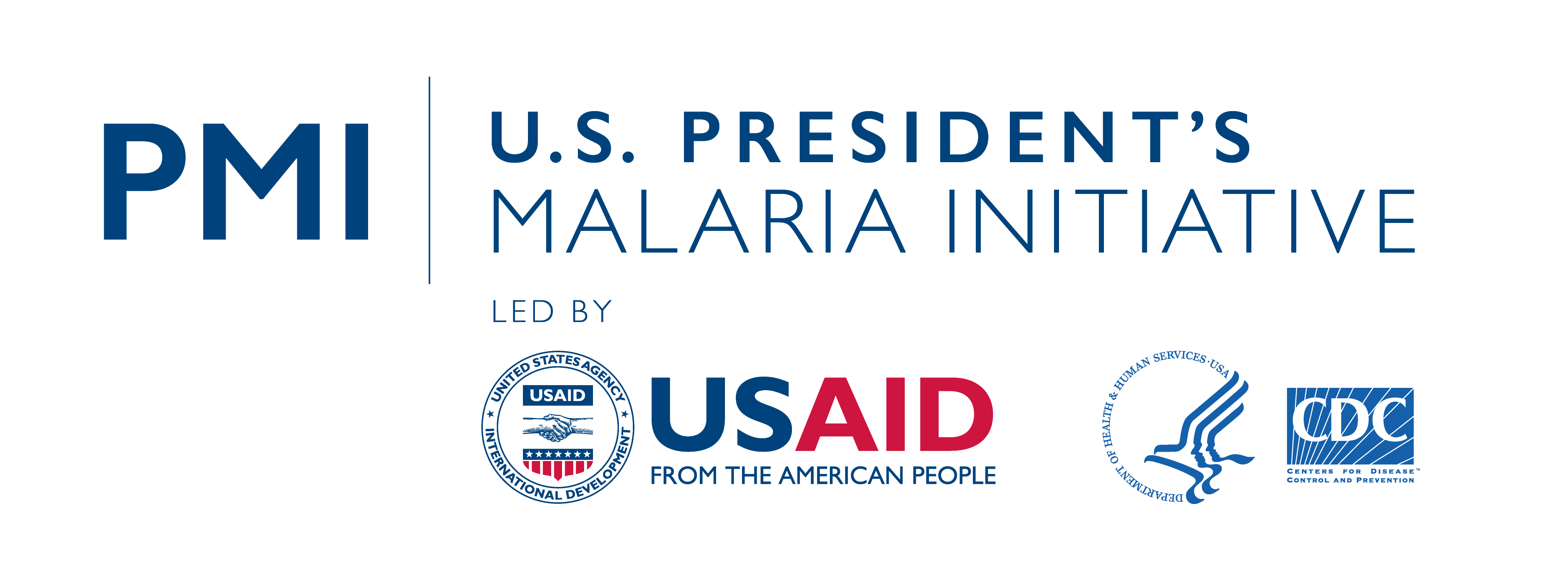 According to Sierra Leone’s 2016 Malaria Indicator Survey (SLMIS), malaria is endemic in the country with the stable and perennial transmission. Malaria prevalence is 40% among children age 6-59 months and is the main cause of morbidity and mortality among children under 5 years. Malaria prevalence is two times higher in rural areas (49%) than in urban ones (25%).
According to Sierra Leone’s 2016 Malaria Indicator Survey (SLMIS), malaria is endemic in the country with the stable and perennial transmission. Malaria prevalence is 40% among children age 6-59 months and is the main cause of morbidity and mortality among children under 5 years. Malaria prevalence is two times higher in rural areas (49%) than in urban ones (25%).
Insecticide-treated bednets (ITNs) are distributed to children between 12 and 59 months of age upon successful completion of PENTA3 immunization, and to pregnant women during the first contact for antenatal care. The first mass distribution of ITNs took place in 2006 in Bo and Pujehun districts. The same year, a countrywide mass ITN distribution for children under 1 year of age occurred alongside a measles vaccine campaign. Mass distribution of ITNs was subsequently conducted in 2010, 2014, and 2017. These mass campaigns, together with other distribution channels, helped increase the ownership of ITNs from 37% in 2008 (SLDHS, 2008) to 60% in 2016 (SLMIS, 2016). In 2019, 67.9% of the households owned at least one ITN in Sierra Leone (DHS, 2019). The insecticide resistance monitoring conducted in 2018-2019 indicated strong resistance of the main malaria vector Anopheles gambiae in Sierra Leone to pyrethroids.
After pre-exposure to PBO, the mortality rate observed for both deltamethrin and permethrin increased in the four sentinel districts but was below the 90% cut-off point for confirmed resistance, indicating that a monooxygenase-based resistance mechanism is partially involved, but is not fully responsible for the pyrethroid resistance observed. Based on this finding, the NMCP implemented a countrywide Permethrin and Deltamethrin PBO ITN mass campaign in May and June 2020.
In 2019, VectorLink Sierra Leone supported the NMCP in the maintenance and management of the insectary established in Makeni (Bombali District) which was established in 2018. VectorLink continued to maintain the susceptible Kisumu strain of An. gambiae. VectorLink also supported the monitoring of vector bionomics, providing information on vector density, distribution, and behaviors. The susceptibility of An. gambiae s.l. to the insecticides used in public health was assessed, and these data guided the development of the Insecticide Resistance Monitoring and Management Plan (IRMMP), the Integrated Vector Management Policy (IVMP), and Strategic plans. The information also helped the NMCP select the appropriate ITNs for distribution during the 2020 mass campaign. In 2020, the project will continue to provide technical and financial assistance to the NMCP to conduct malaria vector bionomics monitoring in 15 sentinel sites in five districts and insecticide resistance of An. gambiae s.l. (see Table 1 in Section 3.1). In 2020, VectorLink will continue to support the NMCP in holding quarterly meetings of the VCTWG and semi-annual meetings of the IVM National Steering Committee to review entomological data for decision making on vector control interventions for malaria and other vector-borne diseases
The information collected on vector density, seasonal distribution, behavior, and infectivity will be used to determine the optimal time to do IRS and it will serve as baseline data for assessing IRS impact. In addition, VectorLink will support ITN durability monitoring after the 2020 ITN mass campaign and will start the baseline data collection for the assessment of the impact of the co-deployment of PBO nets and IRS in Sierra-Leone.
In 2021, under the PMI VectorLink Sierra Leone project, IRS was conducted in two districts, targeting 147,992 structures using a neonicotinoid insecticide (SumiShield TM 50 WG) from May 8, 2021 to June 9, 2021. A total of 150,895 structures were sprayed out of 160,919 structures found by spray operators in the targeted districts, accounting for a coverage rate of 93.8%.
In year five (January 2022 – December 2022), the project, after consultation with PMI and NMCP, will carry out the following activities:
IRS
PMI VectorLink Sierra Leone project will work with stakeholders including NMCP, regions and districts, to spray 160,919 targeted structures in two districts using Sumishield TM 50WG. The project’s primary objective is to reach a minimum coverage of 85 percent of the structures found in each district by implementing high-quality IRS operations.
- Support the NMCP in spraying an estimated 160,919 eligible structures in 12 chiefdoms in Bombali District and 16 chiefdoms in Bo District, using SumiShield TM
- Ensure that the spraying is of high quality, achieves at least 85% spray coverage, and protects an estimated population of 698,552.
- Devise and implement a deliberate plan to begin building capacity at the national, district, and chiefdom levels to manage IRS operations, including planning, spraying, and monitoring and evaluation (M&E).
- Continue to engage District Health Management Teams (DHMT) and Peripheral Health Unit (PHU) staff in the planning, implementation, and supervision of IRS in the two districts.
- Promote gender equality and female empowerment by recruiting women to fill at least 30% of the IRS seasonal worker positions. VectorLink will encourage the DHMT selection committees to achieve the mandatory quota.
- Coordinate community mobilization activities in collaboration with PHU and local authorities to raise awareness and achieve high community acceptance of IRS.
- Conduct high-quality M&E of IRS, including daily performance monitoring during the IRS campaign, to ensure the achievement of the objectives and targets assigned.
- Under the leadership of the project Environmental Compliance Officer (ECO), provide capacity building and work in collaboration with the NMCP Directorate of Environmental Health in the Ministry of Environment to conduct environmental inspections.
Entomological Monitoring Activities
- Monitor the density, biting rate, behavior, infectivity and parity of malaria vectors in 10 sentinel sites.
- Continue to maintain functional insectaries in Makeni and Freetown with the gambiae Kisumu strain available at all times and annual colony verification.
- Continue measuring the susceptibility of the main malaria vector, gambiae s.l. (in order of priority) to deltamethrin, permethrin, clothianidin, chlorfenapyr, alpha-cypermethrin, and pirimiphos-methyl. Susceptibility of An. gambiae s.l. from Bo, Bombali, Kono, Port Loko, and Karene districts will be tested.
- Measure the intensity of resistance to pyrethroids, and perform synergist assays, where appropriate.
- Subcontract with the Sierra Leone locally-based Njala University Laboratory, as well as the Centre for Research in Infectious Diseases (CRID), a regional laboratory in Cameroon or other suitable laboratories to use polymerase chain reaction (PCR) to process mosquitoes to identify samples to the species level, and use enzyme-linked immunosorbent assay (ELISA) to test sample mosquitoes for infectivity and PCR for determination of blood meal origin.
- Build the capacity of Njala university laboratory in Sierra Leone in order to conduct in-country laboratory analysis of samples collected.
- Subcontract with CRID and Njala University to conduct PCR to identify the mechanism associated with the resistance observed (knockdown resistance (kdr) and acetylcholinesterase 1 (Ace-1) mutations).
ITN Activities
- Continue to support the NMCP in conducting the third round (24 months) of ITN durability monitoring covering the two types of ITNs distributed in 2020.
- Support NMCP in the monitoring and evaluation of the school-based ITN distribution program
- Support NMCP to develop an operations research concept in collaboration with Breakthrough Action to understand reasons for low net use and provide recommendations to NMCP for behavior change communications.
Assessment of the Co-deployment of piperonyl butoxide (PBO) Nets and IRS
- Monitor the co-deployment of IRS and PBO ITNs.
- Monitor the density, biting rate, behavior, infectivity and parity of malaria vectors in the 12 co-deployment sites
- Conduct an analysis of the entomological data for the co-deployment study
- Conduct an analysis of the HMIS data
National-level Support
- Continue to strengthen the capacity of the NMCP and district health staff in entomology and vector control, use of entomological data for decision making and identification of priority operational research questions once there is an established leadership within NMCP.
- Continue to support the NMCP in holding quarterly meetings of the Vector Control Technical Working Group (VCTWG) and semi-annual meetings of the Integrated Vector Management (IVM) National Steering Committee.
- Continue to provide technical support to the NMCP and other stakeholders for data review for IRS insecticide selection in 2022 (for the spray campaign beyond 2022).
- Support the NMCP in reviewing the Insecticide Resistance Monitoring and Management Plan (IRMMP).
- Strengthen the capacity of NMCP and national stakeholders for high quality leadership from NMCP during IRS implementation.

